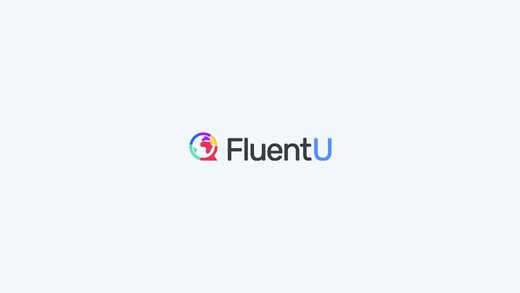FluentU Review (2023): Better Than Yabla Or Poor Imitation?
 Written byHubert Nagel
Written byHubert Nagel- Read time12 mins
- Comments4


- Well-designed and sleek interface compared to Yabla
- Wider range of language options
- Good variety of quality video content
- Overpriced
- Becoming increasingly redundant due to streaming video services
- Mostly just YouTube content with an interactive wrapper
FluentU gives you access to an extensive library of video content (more than you’ll ever actually need) and provides a handy video interface for analyzing the foreign language content that you’re watching. It offers more language options than its competitors but is more expensive.
At long last, I’ve decided to put together a detailed FluentU review.
Building on the discoveries in my recent review of Yabla, I’ve taken the time to explore its more popular successor/alternative to compare how it performs.
My conclusion may surprise you (keep reading)!
UPDATE: If you want a far better alternative to FluentU for most major languages, I prefer LingoPie and this popular audio course.
FluentU reviews seem to be quite contradictory.
Some are suspiciously positive and others are unnecessarily negative (sneakily pushing alternatives or written by bloggers with no language learning experience or background in pedagogy).
In this review, I’ll give you a straightforward rundown on what FluentU is all about and whether or not it’s worth a subscription.
Also, if you haven’t already, get a free FluentU account to try it out:
Used FluentU before?
Comment below and share your experience.
Are you in a hurry? You can jump to the different sections here:
Table Of Contents
A note on FluentU’s spammy clickbait advertising
Before I get to the FluentU review, I thought I’d just make a quick side point.
FluentU has become notorious for their spammy blog posts and articles all over Google whenever you search for a language query.
Their clickbait articles can be easily recognized by titles with words like, “Mindblowing”, “Fantastic”, “Stupendous” and they cover just about every topic related to the languages they offer.
Some of FluentU’s articles are good – most are not.
This has nothing to do with their core product’s quality of course but when they publish spun clickbait titles that are full of ads for FluentU, it’s a real turn off their subscription.
There’s even an article titled The Ultimate FluentU Review – written by FluentU!
I’ve avoided their site for years largely for this reason.
With that out of the way, on to the review…
Review: What exactly is FluentU and how does it teach languages?
FluentU is a popular video platform for language learning that’s been around now for several years.
It’s available as both as a web and mobile app (Android and iOS).
Unlike more traditional web platforms (e.g. Rocket Languages), FluentU works by taking short videos sourced from YouTube with a frontend wrapper (I explain this below) which allows learners to interact with the video material.
There are nine languages currently available on the FluentU platform:
- Spanish
- French
- Italian
- German
- English
- Russian
- Japanese
- Mandarin Chinese
- Korean
Languages vary in quality and coverage (some definitely seem to be better than others).
How does FluentU work?
FluentU takes free, publicly available content from YouTube and overlays a wrapper with interactive video and subtitle controls.
Have you ever watched a foreign language video on YouTube and wished you had an easy way to look subtitle terms up and/or save them into a flashcard deck?
Well FluentU (and other alternatives like Yabla) provide this functionality.
The site offers content for all learner levels:
- Newbie
- Elementary
- Intermediate
- Upper Intermediate
- Advanced
- Native
I can’t say for sure but it appears that these levels are fairly arbitrary (loosely designated rather than according to tested level).
When you browse through the FluentU collection, you can select according to these levels, by video length or topic.
FluentU lesson topics are fairly broad. They include:
- Arts and Entertainment
- Business
- Culture
- Everyday Life
- Health and Lifestyle
- Politics and Society
- Science and Tech
You can independently view the written dialogues and new vocab of the videos, and they offer quizzes and flashcard functionality to help you recall what you’ve learned for each video.
Key review point: FluentU is a content provider, not a course provider (similar to a resource like TalkInArabic.com).
For this reason, you shouldn’t expect a structured learning format.
It’s really up to you, the learner, to decide how best to use the material.
Reviewing the lesson content delivery style of FluentU and its features
Are lesson levels appropriate?
As I said above, it does seem that the video levels are arbitrarily categorized.
This is not a huge deal (it’s very difficult to accurately level material you source from YouTube) but it would be nice if FluentU could rank content more appropriately and evenly.
Where I differ from others however, is that I believe beginners should be watching and listening to advanced content from the get-go anyway.
The beauty of platforms like FluentU is that a beginner can watch an advanced-level video, replay it a thousand times and get detailed info on the terms used.
So theoretically, level categorization could be done away with altogether.
Video quality

You get a real mix in the kinds of videos that it presents – cartoons, soap operas, music videos, commercials.
I personally find these videos extremely helpful.
Just the right amount of varied study material without being excessively long and tedious.
One thing I noticed that sets FluentU and Yabla apart is that Yabla has more multi-part series (at least in the Italian version I used). This may appeal to some people but for me personally, I’d rather bite-size content which is easier to remember and recall.
FluentU video lessons give you just the right amount of study material for a single session and the quality of each one is generally (though not 100% of the time) good.
Video quantity
FluentU has literally thousands of available videos in their content library.
One of the points I raised in my Yabla review is that some negative reviews I’ve encountered highlight “insufficient content” as a con.
FluentU receives the same criticism.
Let me respond to this by saying: Nobody (and I mean nobody) is going to get through thousands of videos.
Nobody is going to feel as though thousands of lessons are insufficient.
In fact, I would argue that thousands of videos are superfluous – you simply don’t need that many in order to learn a foreign language.
You’d get just as much value from 50 videos as you would from 2500.
FluentU’s ‘how well do you know it?’ indicator
Okay, that’s not actually what it’s called.
But it’s a really nifty little feature that FluentU has built in to help you select appropriate video content (in fact, probably one of the most useful design aspects).
Here’s how it works:
FluentU basically tracks the words you’ve learned (or ‘Already Know’/ ’Don’t Know’).
When you browse through the library of video lessons, FluentU displays a blue bar below each video.
What this bar does is indicate the amount or percentage of the video that you already know based on the words you’ve saved previously.
I think this is an ingenious feature to include.
It really puts things into perspective for you when you go to watch a new video:
“Wow, do I really know 60% of the vocab in this video already?”
Other features

There are 4 primary features worth noting:
- Audio lessons.
- Flashcards.
- Built-in dictionary.
- Lesson goals or streaks.
For the audio lesson feature, I think it’s important to recognize that FluentU is fundamentally a video resource.
Audio components are not what you sign up for.
While it’s a nice addition to include, the bulk of the audio appears to simply be video minus the visual part. In other words, they’ve taken the audio track of the videos and used them to create “audio” lessons.
You could basically achieve the same thing by closing your eyes!
The flashcards and inbuilt dictionary are a fairly stock-standard feature these days in most language web apps and platforms.
You pretty much expect a language resource to include them.
The ability to add words you find in videos directly to a flashcard app (or look it up in the picture dictionary) is a very helpful feature indeed.
The only massive downside is that natural voices aren’t used for playback – it’s all text-to-speech! (this is one thing I criticize Duolingo for heavily).
FluentU includes a lesson streak feature (Daily Goal) too.
This is a fairly typical and expected feature for most language SaaS products these days.
On the one hand, they’re designed to keep you subscribed to the site (their benefit).
On the other hand, streaks do help you stay motivated and challenged, and give you a little extra push to keep at it.
Review of FluentU’s only alternative, Yabla – how do they compare?
I’ve already written a very extensive review of Yabla and even made a video review about it (see above).
Yabla’s been around for decades.
In fact, it’s one of the oldest and longest running language learning platforms online.
Yabla only covers 6 languages – English, German, Spanish, French, Italian and Chinese (FluentU covers 9).
When FluentU was first announced, it was touted and very popular for Japanese learners in particular (early FluentU reviews seemed to focus on Japanese) but since became known for its other offerings.
I can’t be sure of this, but I think that it’s safe to say that FluentU was originally inspired by Yabla.
They both essentially do the same thing (there are some minor functional differences such as Yabla’s patented technology and YouTube licensing), but overall, they do the same thing.
Where FluentU beat Yabla is in its UI design.
Purely aesthetic superiority.
Yabla’s primary criticism has been it’s dated design (it’s a much older web frontend) and FluentU is very sleek and modern.
In my opinion, this is a superficial difference and does not really affect the overall value or usefulness of either product.
The biggest difference is pricing.
If you’re learning a language that is supported by both Yabla and FluentU, you’d be better off using Yabla for the simple fact that it’s cheaper and does the same thing.
Note: There is another free site called CaptionPop which is free to use but in my opinion is garbage (very basic functionality). But if money’s an issue, take a look.
For non-Yabla languages, use FluentU.
Unless you’re learning Russian…
3ears (FluentU alternative for Russian)
Learning Russian?
Okay, I know I said that Yabla is FluentU’s only alternative, but there is actually one other site for Russian which is definitely similar that I want to tell you about.
It’s been in the works for several years and is still in Beta (or Alpha) stage but it’s frankly amazing for Russian.
The site’s called 3ears.
It’s very similar in functionality to Yabla and FluentU but solely for Russian.
Currently, you don’t need an account to use it (it’s free) but this may change in the near future (it looks like they have plans to monetize it at some point).
3ears has an active team working on it and adding new video content.
Are video wrappers like FluentU and Yabla redundant?
No other FluentU review seems to be mentioning this (in my opinion) key question.
I raised this in my Yabla review (and video review):
In case you’re unable to watch the video, my main point is that streaming, foreign language video content has become so readily available in recent years that I wonder if video wrappers like FluentU are even needed anymore.
Is it justifiable to pay for something that YouTube does so well for free?

So does it make sense to pay for a platform that takes that free video and puts an interactive wrapper over the top of it?
You can already control speed and subtitles via YouTube’s native interface.
The only thing a video wrapper does that YouTube does not (yet), is add the ability to interact directly with words to fetch definitions.
But this could all change if YouTube introduces it as a feature.
Note: I’m not stating that I think FluentU and Yabla are redundant and pointless.
I’m simply posing the question in this FluentU review as something to consider.
Pricing of FluentU
This FluentU review wouldn’t be complete without mentioning its price.
Compared to Yabla, which is currently selling at $12.95 a month, FluentU is a little steeper (unless you use a FluentU discount).
It has simple pricing that’s set at: $30 per month or $240 per year if you take the annual option.
This is roughly equivalent to what Glossika charges (see my Glossika review here).
I still think FluentU is very reasonable in terms of its pricing when you consider the enormous amount of content it offers (Yabla is definitely under-priced too).
There’s also a 14 day FluentU free trial.
Review summary: Is FluentU worth the money?
Ultimately, I think FluentU is a decent supplemental resource for the languages it covers (Spanish, French, German, Italian, Japanese, Chinese, English, Russian and Korean).
I’ve also seen many reviews on Reddit for FluentU that say the same thing.
It gives you access to an extensive library of video content (more than you’ll ever need) and provides a handy mechanism to analyze the foreign language content that you’re watching.
The price is slightly steep compared to other similar products but still reasonable for what it offers.
It also offers more language options compared to its only competitor, Yabla.
My only concern at the end of the day is whether or not language platforms like FluentU and Yabla are becoming redundant due to the increased accessibility of streaming video in foreign languages.
The standard YouTube player can already slow speed, as well as toggle captions and translations.
In order to stay viable, FluentU may have to consider dropping its price in the near future if YouTube considers to roll out new foreign language features.
Overall, I say that if you’re looking for a great learning supplement, FluentU is worthwhile.
Curious?
Ideally, combine it with an italki tutor.
Have you used FluentU before or any alternatives?
Share your experience below in the comment section.
 Grab the link to this article
Grab the link to this article